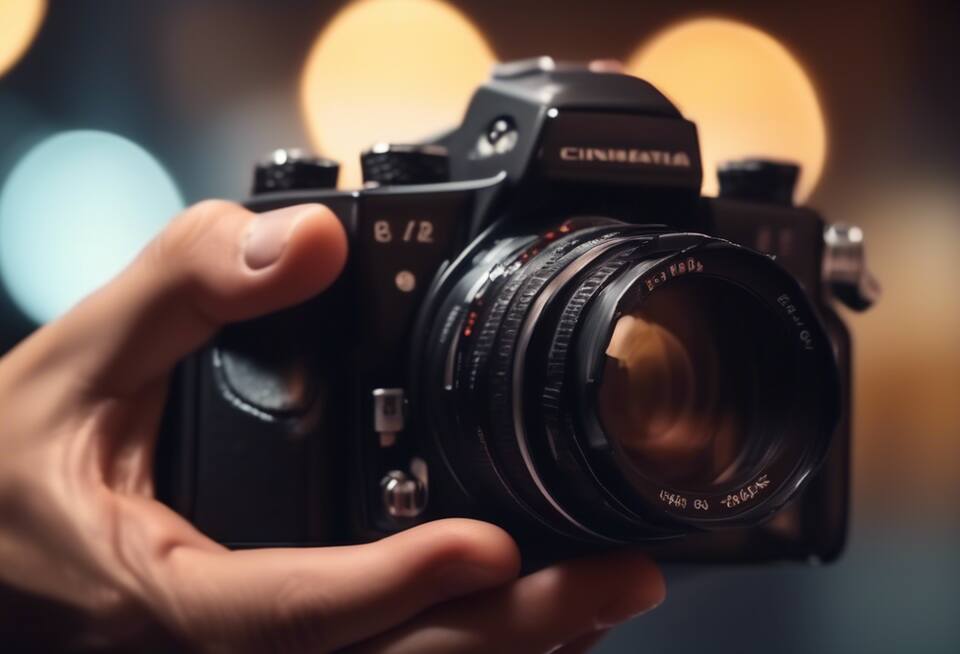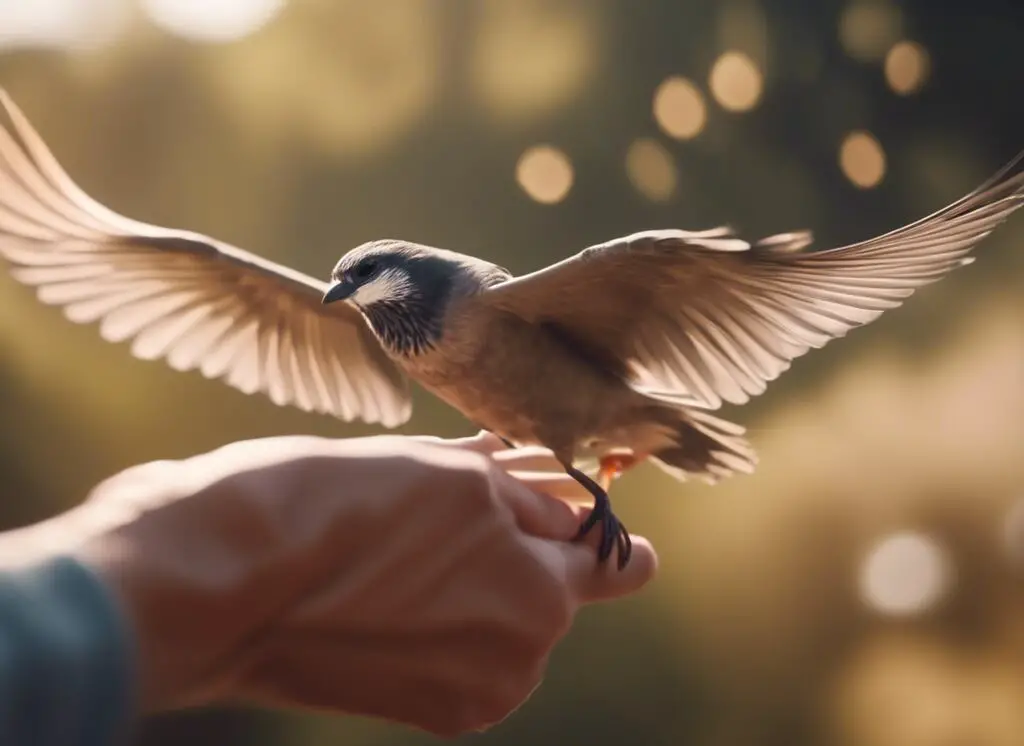Bird-in-flight photography is a captivating form of capturing the beauty and grace of birds in their natural habitat. It requires skill, patience, and the right equipment to achieve stunning results. One crucial aspect of successful bird-in-flight photography that is often overlooked is the importance of using the proper handholding technique. In this article, we will delve into why mastering the art of handholding is essential for capturing those fleeting moments of bird flight with precision and clarity.
Table of Contents
Importance of Proper Handholding Technique in Bird-in-Flight Photography
Stability and Sharpness
A steady hand is paramount when photographing birds in flight. Proper handholding technique provides stability to your camera, reducing the chances of motion blur in your images. When shooting moving subjects such as birds, any camera shake can result in blurry photos, undermining the overall quality of your shots. By adopting the correct handholding method, you can ensure sharper images with crisp details, even when capturing fast-moving subjects in flight.
Precision and Tracking
Effective handholding technique enhances your ability to track birds in flight seamlessly. Birds are agile creatures that move swiftly and unpredictably. To keep them in focus and maintain the desired composition, you need to be able to pan smoothly and follow their flight path accurately. By honing your handholding skills, you can achieve superior control over your camera movements, allowing you to track birds with precision and capture them in sharp focus as they soar through the sky.
Comfort and Endurance
Photographing birds in flight often requires spending extended periods with your camera at the ready. Using the right handholding technique not only improves the technical aspects of your shots but also contributes to your overall comfort and endurance during shooting sessions. Proper hand placement and posture can reduce strain on your wrists, arms, and shoulders, minimizing fatigue and allowing you to focus on the creative aspects of your photography without discomfort or distraction.
Equipment Support
In bird-in-flight photography, the proper handholding technique is not limited to how you hold your camera but also extends to how you support your equipment. Large telephoto lenses commonly used in bird photography can be heavy and unwieldy. Utilizing the correct handholding method, such as cradling the lens barrel and supporting the camera body, helps distribute the weight evenly and provides added support, making it easier to handle bulky gear for prolonged shooting sessions.
Composition and Framing
Mastering handholding technique is not just about technical proficiency; it also plays a significant role in achieving compelling compositions in your bird-in-flight photos. The way you hold and maneuver your camera directly influences the framing of your shots. By practicing proper handholding, you can fine-tune your framing skills, ensuring that your subjects are well-positioned within the frame and that distracting elements are minimized, resulting in visually pleasing and well-composed photographs.
The importance of using the proper handholding technique in bird-in-flight photography cannot be overstated. It is a fundamental aspect that impacts the quality, precision, and overall success of your bird photography endeavors. By investing time in mastering the art of handholding, you can elevate your skills as a bird-in-flight photographer and capture breathtaking images that truly showcase the beauty and dynamism of avian subjects in motion.

Tips for Mastering Handholding Skills in Bird-in-Flight Photography
Photography enthusiasts often find bird-in-flight photography a thrilling and rewarding experience. Capturing the grace and beauty of birds in motion can be a challenging yet fulfilling pursuit. One crucial aspect of mastering bird-in-flight photography is ensuring proper handholding techniques.
The way a photographer holds their camera can significantly impact the outcome of their shots. In this section, we will delve into why proper handholding technique is essential in bird-in-flight photography and provide valuable tips to help photographers enhance their skills in this area.
Importance of Proper Handholding Technique
Proper handholding technique is vital in bird-in-flight photography for several reasons. Firstly, birds move swiftly and unpredictably, requiring photographers to have steady hands to track and capture them effectively. A secure grip on the camera reduces the risk of camera shake, resulting in sharp and clear images. Additionally, using the correct handholding technique allows photographers to maintain better control over focus and composition, enabling them to frame the shot precisely as desired.
Tips for Mastering Handholding Skills
Here are the key steps for proper handholding technique when photographing birds in flight, with additional information for each:
- Use a stable stance with feet shoulder-width apart and knees slightly bent: This foundation provides balance and helps absorb any body movement, reducing camera shake.
- Tuck your elbows in close to your body for stability: Keeping your elbows close minimizes arm fatigue and adds stability, making it easier to hold the camera steady.
- Support the lens with your left hand, cradling it underneath: This technique distributes the weight of the camera and lens more evenly, preventing strain and allowing for better control.
- Grip the camera firmly with your right hand: A secure grip ensures you have complete control over the camera’s movements and can quickly adjust settings if needed.
- Press the viewfinder against your eye to create a third point of contact: This additional contact point helps stabilize the camera further, reducing the chances of blurriness caused by shaking.
- Pan smoothly by rotating your entire upper body at the waist, not just your arms: Using your torso to pan keeps the motion fluid and controlled, avoiding the jerky movements that can come from only moving your arms.
- Track the bird’s movement before it enters the frame to establish a smooth panning motion: By starting to track the bird early, you create a smoother motion and increase your chances of capturing sharp, in-focus images.
- Keep both eyes open to maintain situational awareness: This technique helps you see the broader scene and anticipate the bird’s movements, making it easier to track and capture it in flight.
- Squeeze the shutter button gently, don’t jab at it: A gentle press minimizes camera shake and ensures a smoother shot, increasing the likelihood of a clear image.
- Follow through with your pan even after taking the shot: Continuing the panning motion maintains stability and can help capture additional shots in a burst sequence without sudden stops.
- Use continuous autofocus and burst mode: Continuous autofocus keeps the bird in focus as it moves, and burst mode increases your chances of getting a sharp shot by taking multiple frames in quick succession.
- Practice proper breathing technique – exhale slowly as you pan and shoot: Slow exhalation helps steady your body and reduce any subtle movements that can blur your shot.
- Keep your movements fluid and avoid tensing up: Relaxed, fluid movements help you track the bird more smoothly and reduce the likelihood of camera shake.
- Start with slower, larger birds to develop your technique before attempting faster subjects: Slower birds give you more time to practice and perfect your technique, building confidence for capturing faster, more agile birds.
- Practice regularly to build muscle memory and improve your skills over time: Consistent practice helps ingrain the techniques into muscle memory, making the process more intuitive and improving your overall skill in bird photography.
Mastering proper handholding technique is essential for bird-in-flight photography enthusiasts seeking to elevate their skills and capture stunning images of birds in motion. By implementing the tips outlined in this article and dedicating time to practice and refinement, photographers can enhance their handholding skills and create compelling and impactful bird-in-flight photographs. Remember, the key to successful bird-in-flight photography lies not only in technical proficiency but also in passion, patience, and a deep appreciation for the beauty of these majestic creatures.
Conclusion
In the world of bird-in-flight photography, mastering the art of proper handholding technique is paramount to capturing stunning and sharp images. Understanding the importance of stability, control, and precision when handholding your camera can make a significant difference in the quality of your shots. By employing the right handholding techniques, photographers can elevate their skills and create visually captivating images that showcase the beauty and grace of birds in motion.
To master handholding skills in bird-in-flight photography, there are several key tips that photographers can follow. Firstly, maintaining a firm grip on the camera while keeping your arms close to your body can provide the stability needed to track birds effectively. Additionally, using the correct camera settings, such as adjusting the shutter speed and aperture, can help freeze motion and achieve sharp focus on the subject. It is also essential to practice panning techniques to follow the movement of birds smoothly and capture dynamic shots.
Furthermore, proper posture and body positioning play a crucial role in handholding technique. By standing with your feet shoulder-width apart and keeping your body stable, you can minimize camera shake and maintain control over your movements. Engaging your core muscles and breathing steadily can also aid in reducing camera shake and improving shooting accuracy. Additionally, practicing handholding drills and exercises can help increase strength and endurance, allowing photographers to handle their equipment comfortably for extended periods.
Moreover, adapting to different shooting conditions and environments is essential for mastering handholding skills in bird-in-flight photography. Whether shooting in bright sunlight, overcast skies, or low-light conditions, photographers must be able to adjust their techniques accordingly. Being aware of factors such as wind direction, background distractions, and the behavior of the birds can also enhance the quality of your shots. Flexibility and adaptability are key when it comes to capturing the perfect bird-in-flight image.
Proper handholding technique is vital for achieving success in bird-in-flight photography. By understanding the significance of stability, control, and precision, photographers can enhance their skills and capture stunning images of birds in motion. Through practice, dedication, and attention to detail, mastering handholding skills becomes more attainable, allowing photographers to showcase the beauty and grace of avian subjects in their photographs.
By following the tips outlined above and consistently honing your handholding skills, you can elevate your bird-in-flight photography to new heights and create images that truly captivate viewers.



